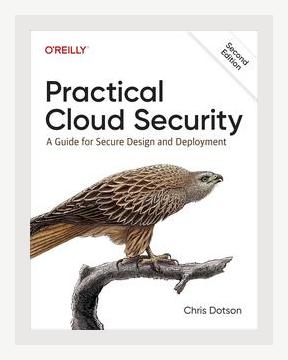Technology and Digital TransformationCloud Computing
Summary: Practical Cloud Security: A Guide for Secure Design and Deployment by Chris Dotson
Introduction:
Chris Dotson’s book, “Practical Cloud Security: A Guide for Secure Design and Deployment,” serves as a comprehensive manual for implementing robust security in cloud computing environments. Written in 2019, the book takes a pragmatic approach, emphasizing actionable advice to help both newcomers and seasoned professionals enhance their cloud infrastructures’ security.
1. Fundamentals of Cloud Security
Overview
Dotson kicks off with a discussion on the basics and the shared responsibility model, explaining that cloud security is a joint effort between the cloud service provider (CSP) and the user.
Actionable Advice:
– Understand Shared Responsibility Model: Familiarize yourself with the precise security responsibilities of both your organization and the CSP. For example, while AWS secures the hardware and infrastructure, you are responsible for firewall configurations.
2. Security Design Principles
Overview
This section delves into foundational security principles such as least privilege, defense in depth, and secure by design.
Examples:
– Least Privilege Principle: Giving employees only the permissions they need to perform their jobs. For instance, a marketing user should not have access to financial systems.
Actionable Advice:
– Implement Least Privilege: Regularly review and adjust user permissions to restrict access based on current roles and needs.
3. Identity and Access Management (IAM)
Overview
IAM is a cornerstone of cloud security, encompassing multifactor authentication (MFA), role-based access control (RBAC), and identity federation.
Examples:
– MFA: Instead of relying solely on passwords, implement multifactor authentication to enhance security.
Actionable Advice:
– Set Up MFA: Configure MFA for all user accounts, ensuring an additional security layer is in place.
4. Network Security
Overview
Chapter 4 addresses network security fundamentals, including Virtual Private Clouds (VPCs), security groups, and network ACLs (Access Control Lists).
Examples:
– VPC: Use VPCs to isolate different parts of your cloud infrastructure, thus minimizing the attack surface.
– Security Groups: Implement security groups to define permissible traffic inbound and outbound to instances.
Actionable Advice:
– Use Security Groups and VPCs: Configure security groups to limit access based on defined policies and use VPCs for stronger isolation.
5. Data Security
Overview
The book’s fifth chapter covers protecting data at rest and in transit, encryption, and key management.
Examples:
– Encryption at Rest and in Transit: AWS offers services such as KMS (Key Management Service) for managing encryption keys securely.
– Key Rotation: Regularly rotate encryption keys to reduce the risk of exposure.
Actionable Advice:
– Encrypt Data: Encrypt sensitive data both at rest and in transit, and employ robust key management practices.
6. Application Security
Overview
Chapters delves into app-level security practices, including secure coding, application firewalls, and deploying secure APIs.
Examples:
– Secure Coding: Follow best practices such as OWASP Top Ten to secure applications.
– Web Application Firewalls (WAFs): Use WAFs to filter and monitor HTTP traffic to and from a web application.
Actionable Advice:
– Deploy WAFs: Set up Web Application Firewalls to manage and mitigate risks associated with web apps.
7. Security Automation and DevSecOps
Overview
Dotson introduces the concept of integrating security into the DevOps pipeline, often termed DevSecOps.
Examples:
– CI/CD Pipelines: Implement automated security tests in your Continuous Integration/Continuous Deployment pipelines.
– Infrastructure as Code (IaC): Terraform or AWS CloudFormation can be employed to automate and secure infrastructure provisioning.
Actionable Advice:
– Automate Security Testing: Integrate security checks within your CI/CD pipelines to automatically test for vulnerabilities.
8. Monitoring and Incident Response
Overview
The book emphasizes the need for continuous monitoring and efficient incident response.
Examples:
– CloudWatch and CloudTrail: AWS provides tools like CloudWatch for monitoring and CloudTrail for logging API calls.
– Security Information and Event Management (SIEM): Tools like Splunk can help aggregate and analyze log data.
Actionable Advice:
– Implement Monitoring Tools: Use tools like AWS CloudWatch and CloudTrail for continuous surveillance and auditing of your cloud resources.
9. Compliance and Legal Issues
Overview
This section covers the various compliance frameworks like GDPR, HIPAA, and how to achieve compliance in the cloud.
Examples:
– Compliance Certifications: AWS offers various compliance certifications which could assist organizations in meeting regulatory requirements.
Actionable Advice:
– Ensure Compliance: Regular audits and adherence to compliance standards relevant to your organization are essential.
10. Case Studies and Practical Implementations
Overview
The final chapters include real-world case studies to illustrate successful cloud security implementations.
Examples:
– Use Cases: The book provides examples such as securing an e-commerce platform using IAM, VPCs, and security groups in AWS.
Actionable Advice:
– Learn from Case Studies: Study these case studies to understand the application of various security principles and tools in real-world scenarios.
Conclusion
Summary
“Practical Cloud Security” by Chris Dotson offers actionable, real-world advice on securing cloud environments. Covering a range of topics from IAM to compliance, the book provides both theoretical understanding and practical steps to implement a secure cloud infrastructure.
Final Actionable Advice:
– Continuous Learning and Adaptation: Cloud security is dynamic. Regularly update your knowledge and security practices to stay ahead of emerging threats.
By following the strategies and recommendations laid out by Dotson, individuals and organizations can significantly enhance their cloud security posture, ensuring that they maintain robust defenses against evolving cyber threats.
